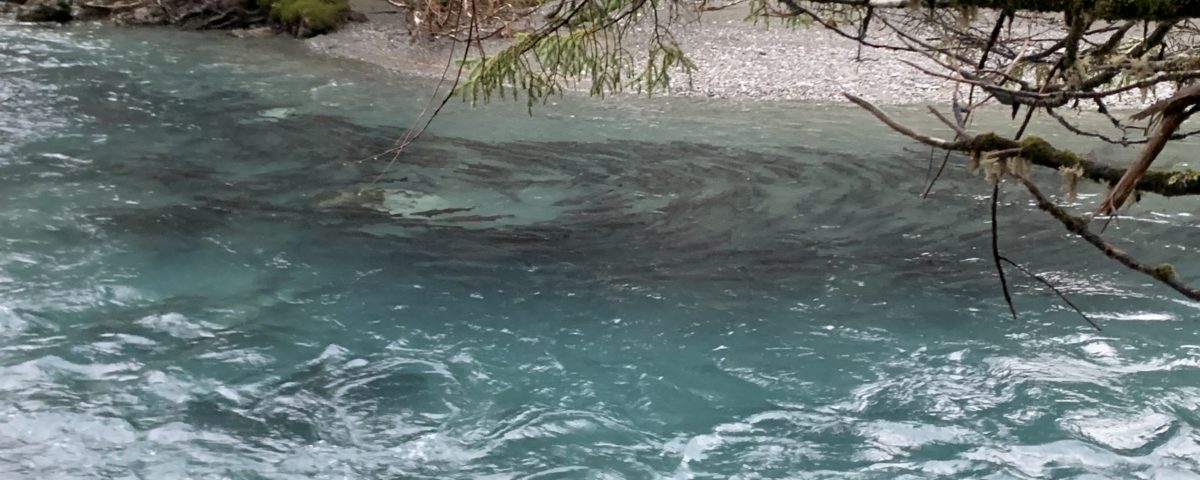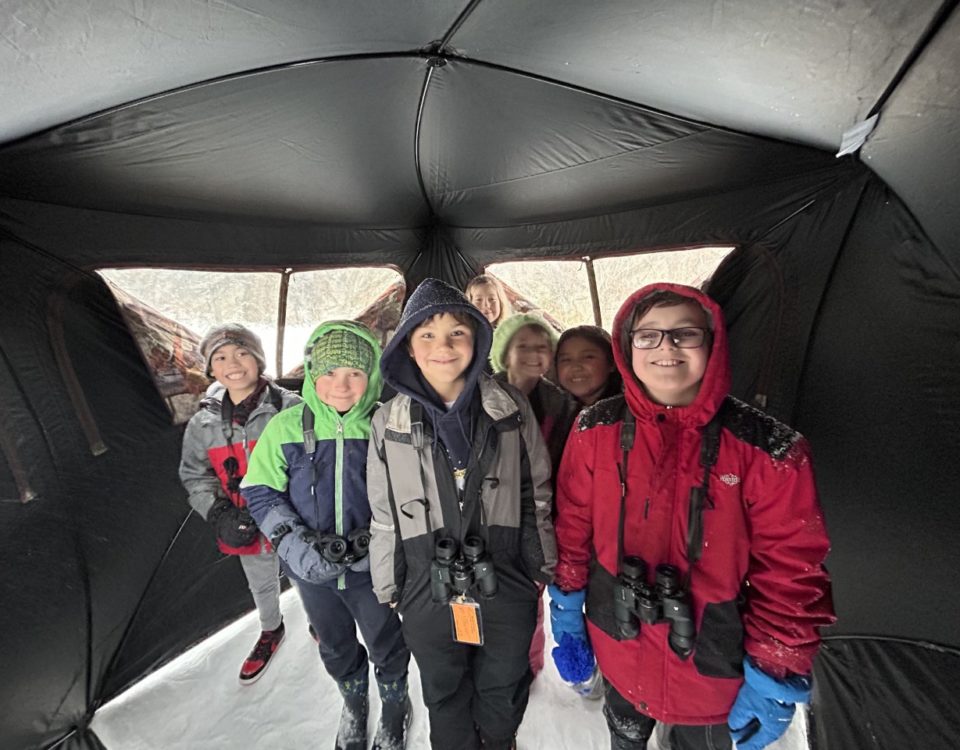Salmon – A Daring Cycle

By Cristina Reo
This August, we will be taking a closer look at salmon and learning some of the things that make them so unique.
All salmon start their lives as fertilized eggs. The eggs incubate in the safety of a gravel redd. A redd is a sort of “nest” that salmon dig for their eggs. Once the eggs hatch, the alevin stage begins. Alevin stay in the protection of the gravel bed. They are very tiny in appearance, not fully developed, and have orange yolk sacs. Since they do not feed in the alevin stage, the yolk sacs are their source of nutrients to grow and develop. As they develop, the components of the yolk sac are slowly used until it disappears. Once this happens, they become fry. Fish in the fry stage swim out of the gravel in search of food. Fry eat insect larvae and plankton. They can be found in slow moving freshwater where they have access to food and protection from predators. Fallen trees, beaver dams, and aquatic plants make good shelter for young fry. The amount of time salmon spend in freshwater as fry varies from species to species.
As salmon begin to migrate to sea, they become smolt. Smolt hang out in estuaries – where fresh and saltwater meet – and acclimate to the saltwater. While in the estuary, they rapidly increase in size and upon reaching a certain size they migrate out to the ocean. Once the salmon enter the open ocean, they begin the adult stage of the life cycle. Here, they live for several years, eating and growing before returning to freshwater to spawn. Salmon spawn in the freshwater streams where they were born. They have an excellent source of smell; some scientists believe that their olfactory system is what leads them back to their home streams. As salmon migrate back to their freshwater streams, they begin to change in external appearance and internal physiology. The cycle is complete when female salmon create a redd and lay their eggs and male salmon fertilize the eggs with their sperm. After salmon spawn, they have completed their life cycle and begin to die.
Stay tuned with our social media pages to learn about salmon adaptations, our salmon research, and our annual Mt. Eccles salmon tank project.




